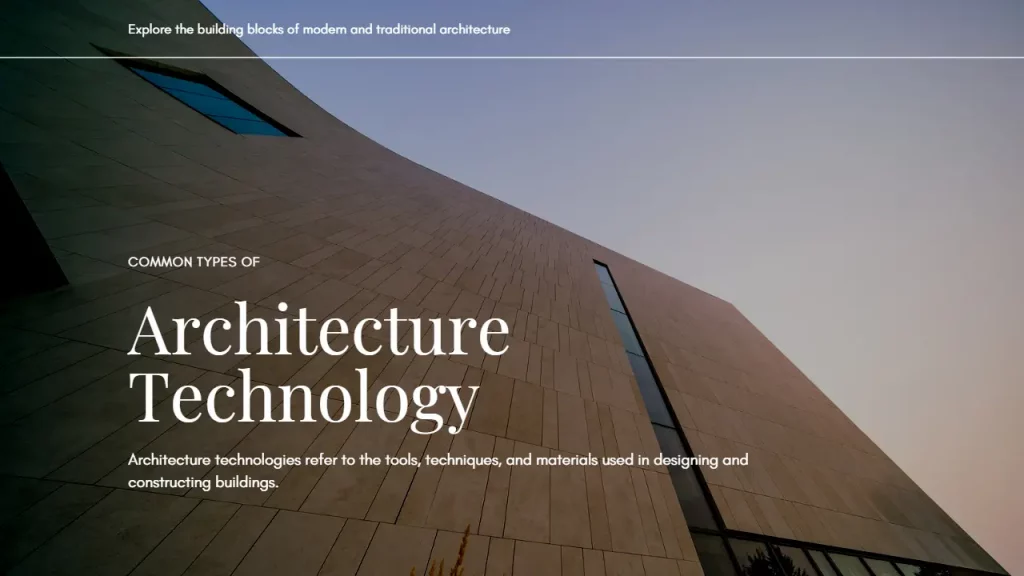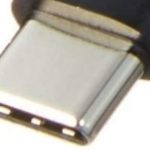You probably know what architectural technology is. Yes, it is the application of scientific knowledge to the construction of structures, including buildings. Architecture technologies refer to the tools, techniques, and materials used in designing and constructing buildings.
From ancient civilizations to modern times, architecture has evolved significantly, giving rise to various styles and techniques that architects and builders use to create functional and aesthetically appealing structures.
But what are the examples of architectural technology? Good question and you have come to the right place. This article will introduce common types of architectural technologies.

Common Types of Architecture Technologies
- Materials – When considering how to use architectural technology, materials are an important factor. Examples of materials that are often used in this context include carbon concrete, composite fiber, glass, wood, and steel. These materials all have unique properties that can be harnessed in order to create the desired structure or design. Carbon concrete, for example, is a durable and lightweight material that is often used in the construction of buildings and other structures. Composite fiber can be used to create strong and lightweight components, while glass can be used to create beautiful and transparent features. Wood and steel can also be used in different ways, depending on the requirements of the project.
- Structures – Structures are physical components that are used to support or enclose a space. Examples of structures include tensile cables, shells, plates, trusses, and beams. Tensile cables are used to provide tension and stability to a structure, while shells, plates, trusses, and beams provide support and strength. Additionally, these structures can be used to create a variety of shapes and sizes, allowing for a wide range of design possibilities.
- Building Envelope – The building envelope is a protective layer that helps to shield a structure from the elements. It functions to keep out extreme winds and temperatures, providing a barrier between the interior and exterior of a building. This layer is often composed of materials such as insulation, siding, and roofing, which work together to keep the interior of a building safe and comfortable.
- Facades – Facades are a type of architectural feature that is used to provide a decorative and/or protective layer on the exterior of a building. Facades are used to enhance the aesthetic appeal of a building, but they can also provide an additional layer of insulation and protection against the elements. A good example is translucent concrete. Translucent concrete is a type of concrete that allows light to pass through it. It is often used for exterior building facades, as it provides a unique aesthetic appeal. T
- Roof – The roof is an important part of any building’s architecture, and it can be used to host a variety of green technologies. These include rooftop gardens, rainwater harvesting systems, solar panels, and other sustainable features. By utilizing these technologies, the roof can help to reduce energy costs, improve air quality, and provide a pleasant outdoor space for occupants. Additionally, it can help to reduce the environmental impact of the building by reducing water and energy use.
- Energy – Energy units are responsible for providing reliable and sufficient energy to solar roofs, walls, and entire buildings. These units are designed to capture energy from the sun and store it for use when needed. The energy generated can be used to power lights, appliances, heating and cooling systems, and other devices. Solar energy is renewable and cost-effective, making it an excellent choice for both residential and commercial applications.
- HVAC – Heating, Ventilation, and Air Conditioning (HVAC) are capable of providing air to residential, commercial, or industrial properties at a good temperature. If your existing HVAC is inefficient or poor quality, get it replaced with a new and credible brand.
- Sanitation and Water Systems – Interior irrigation units are a type of water system designed for indoor use that can help to maintain and care for plants through the efficient use of water resources. Generally, these systems use low-flow pumps and hoses to supply the needed water to plants, while also keeping any excess water away from the soil and out of the air. This can help to conserve water and improve the overall health of the plant while promoting an environment conducive to growth.
- Fire Protection – As the name indicates, any fire protection units are developed to detect or prevent a fire from happening. Smoke barriers, passive systems, and sprinklers are popular fire protection systems.
- Earthquake Resistance – In times of earthquakes, many houses, hotels, and churches are more likely to dilapidate. This is where earthquake-resistant can help. Popular solutions consist of stress-resilient structures, seismic vibration control systems, and base isolation systems.
- Windows – Aside from the aesthetic value, windows are made to take the energy efficiency of a property to the next level. It helps balance the temperature inside rooms, making them comfortable.
- Green Spaces – As the name implies, these spaces are relatively eco-friendly. The best examples are vertical gardens, rain gardens, rooftop gardens, green walls, and more.
- Lighting – Before, people could live in the dark. Today, it’s hard. But it has been easier with indoor lighting products such as outdoor lighting and sunlight transport.
- Transportation – Aside from buses and trains, elevators are a simple example. They are particularly useful for those with limited mobility, as the ride is much smoother than the stairs, with no need to climb several flights of stairs. Elevators also save time and human effort, as they can take several people at once and reduce the time spent going up and down between floors.
- Interiors – More than the comfort, homeowners level up the aesthetic appeal of their property thru interior elements, including high-tech bathrooms and configurable walls. Choose a competent interior designer to turn your goals into a reality.
- Security – Vehicle barriers are one of mankind’s most successful security solutions of the last few years. They are used to restrict entry to a designated area, such as a facility, and to prevent unauthorized vehicles from entering. Vehicle barriers can come in a variety of types, such as gates, bollards, walls, and fences, and can be equipped with electronic access control systems to ensure access is granted only to authorized personnel.
- Information Systems – These are composed of a series of interconnected networks that enable the exchange of data between two or more systems. These networks are made up of hardware and software components that provide reliable communication pathways for the transfer of information. This could be in the form of emails, video conferencing, instant messaging, and more. Information systems enable the secure storage and transmission of data, allowing users to access and manage information quickly and safely.
- Building Automation – What is this really? How does it work? Well, it is a system designed for controlling a particular building’s operation. Building automation technology includes passive lighting and energy production.
- User Interfaces – User Interfaces allow you to have control over various aspects of your environment. They can be used to adjust the settings of a room, such as temperature, lighting, or sound, as well as to control the devices that are in it, such as TVs, computers, and other electronics. You can also use the interface to access data, control the security of a space or view the status of a system.




